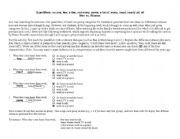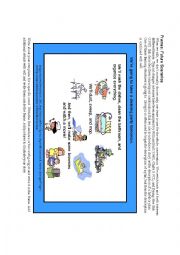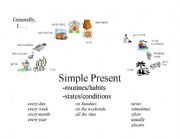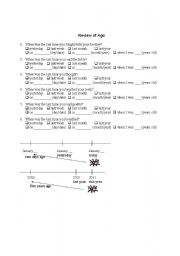
|
Quantifiers: Men vs. Women
This exercise provides options of things men and women might do in different circumstances, asking students to choose to describe either men or women and to add the quantifier: few, some, most, nearly all, etc. *It does not involve the concept count/noncount. With my class, I emphasized that a plural noun comes right after the quantifier.
Level: elementary
Age: 13-17
Type: worksheet
Downloads: 11
|

|
Third-Person Singular Poster
In addition to the traditional table showing the third-person singular change for the simple present tense, this poster gives examples of what types of nouns might take the place of "he/she/it" and illustrates the meaning of first-, second-, and third-person.
Level: elementary
Age: 8-17
Type: grammar-guide
Downloads: 10
|

|
"Going to" as a frame for plans with "will"
This activity explains how "going to" and "will/�ll" work together in descriptions of future plans and helps students to visualize the relationship with a frame in which they can illustrate their plans.
Level: intermediate
Age: 10-17
Type: activity-card
Downloads: 2
|

|
Simple Present and Present Continuous Posters
Posters demonstrating the meaning (with pictures, key words/phrases)and form (with example sentences)of the simple present and present continuous.
Level: elementary
Age: 12-17
Type: grammar-guide
Downloads: 14
|

|
Review of "Ago" (past)
This worksheet provides a visual representation of the meaning of "ago" in addition to six questions about actions students are likely to have done in the recent and more remote past.
Level: elementary
Age: 10-17
Type: worksheet
Downloads: 0
|